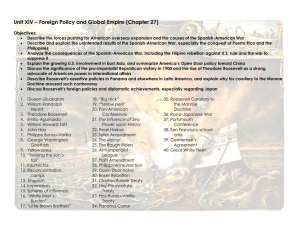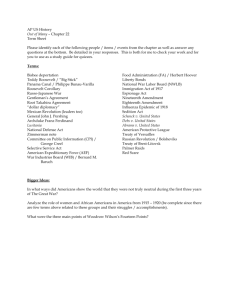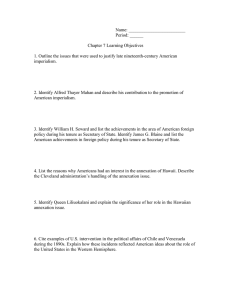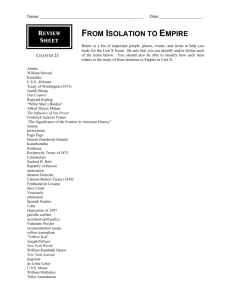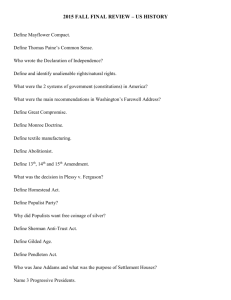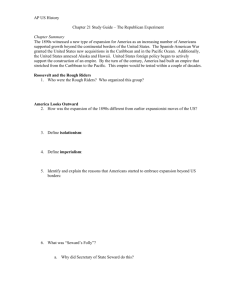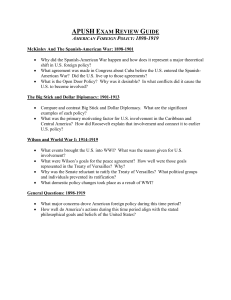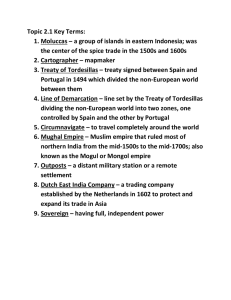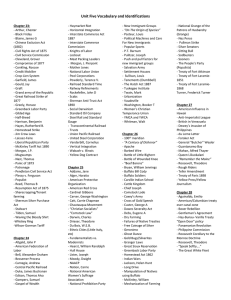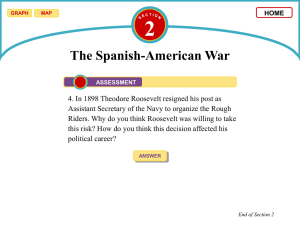AP US History
advertisement
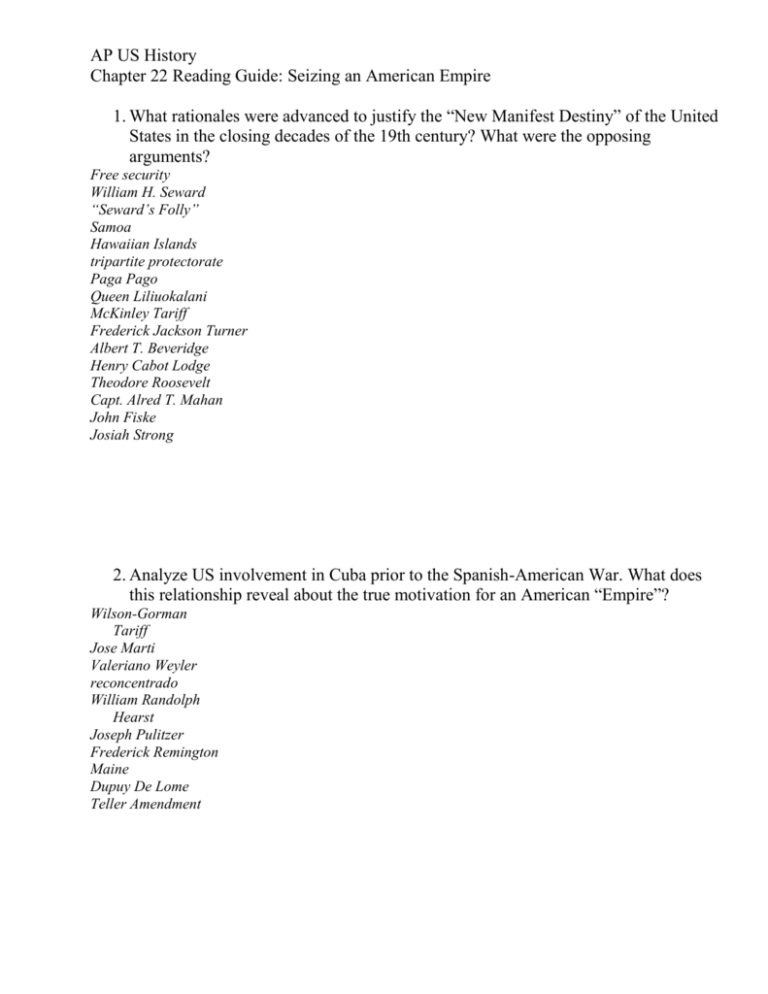
AP US History Chapter 22 Reading Guide: Seizing an American Empire 1. What rationales were advanced to justify the “New Manifest Destiny” of the United States in the closing decades of the 19th century? What were the opposing arguments? Free security William H. Seward “Seward’s Folly” Samoa Hawaiian Islands tripartite protectorate Paga Pago Queen Liliuokalani McKinley Tariff Frederick Jackson Turner Albert T. Beveridge Henry Cabot Lodge Theodore Roosevelt Capt. Alred T. Mahan John Fiske Josiah Strong 2. Analyze US involvement in Cuba prior to the Spanish-American War. What does this relationship reveal about the true motivation for an American “Empire”? Wilson-Gorman Tariff Jose Marti Valeriano Weyler reconcentrado William Randolph Hearst Joseph Pulitzer Frederick Remington Maine Dupuy De Lome Teller Amendment 3. Describe the impact of the events of the Spanish-American War on US attitudes toward imperialistic adventurism in search of our New Manifest Destiny? “Splendid Little War” John Hay Commodore George Dewey Manila Bay “Rough Riders” San Juan Hill Admiral Cervera Puerto Rico Philippines Hawaii Wake Island “White Man’s Burden” Emilio Aguinaldo Filipino Insurrection Anti-Imperialist League William James William Howard Taft Tydings-Duffie Act (1934) Foraker Act (1900) Insular Cases General Leonard Wood Dr. Walter Reed Platt Amendment 4. Compare President Theodore Roosevelt’s foreign policy with those of his Gilded Age predecessors. Justify the label, “‘TR’ the architect of American Empire.” Sino-Japanese War Open Door Policy “Open Door Note” Boxer Rebellion Big Stick Diplomacy “Mr. Imperialism” Oregon Bidlack Treaty(1848) Clayton-Bulwer Treaty (1850) Hay-Pauncefote Treaty (1901) Ferdinand de Lesseps Hay-Herran Treaty (1903) Philippe Bunau-Varilla Yellow Peril Gentlemen’s Agreement Russo-Japanese War(1904-05) Treaty of Portsmouth (1904-05) Great White Fleet Roosevelt Corollary Algeciras Conference Taft-Katsura Agreement
